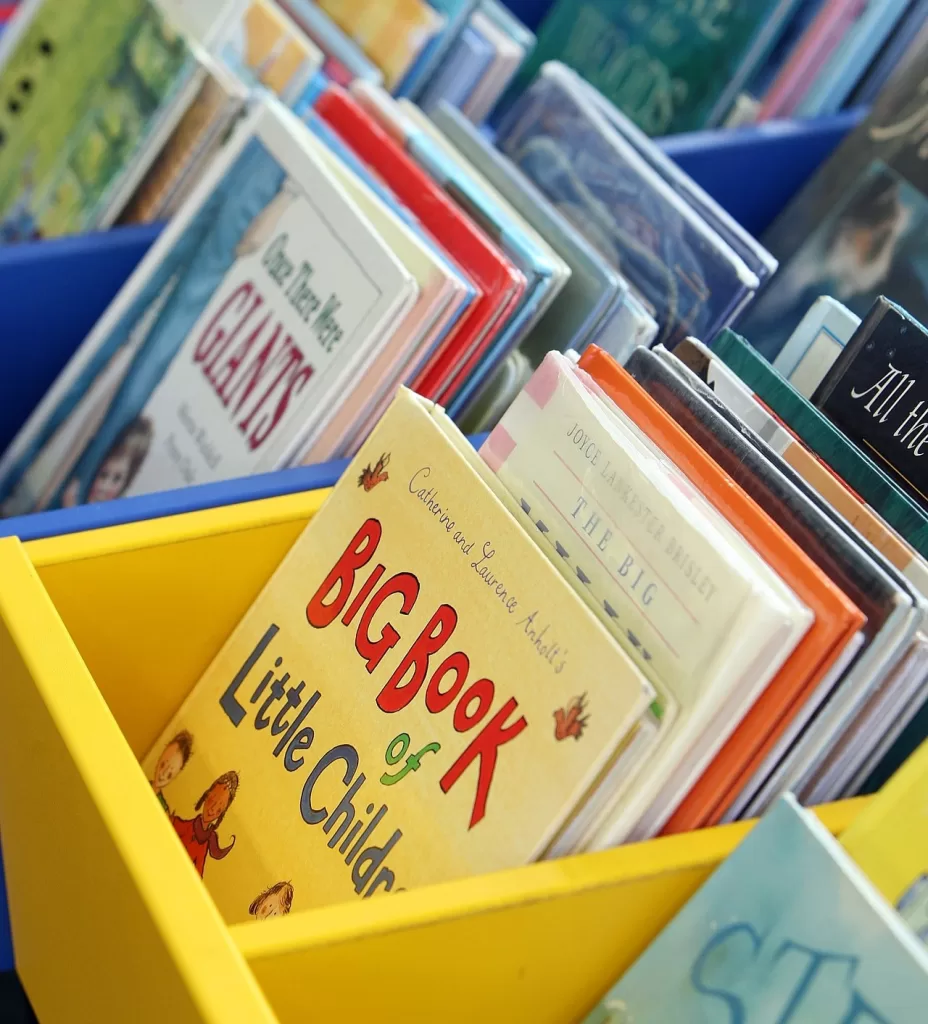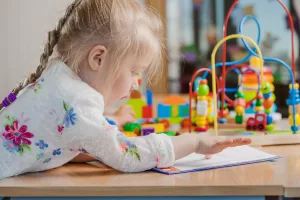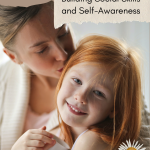Read 10 Timeless Tales to Teach Your Toddler About Humanity: Instilling Valuable Lessons Through Classic Stories
As parents, we all have hopes and dreams for our children – we want them to grow up to be happy, healthy, and successful individuals who can make a positive impact on the world. But in addition to these practical goals, many of us also have a deep desire for our children to be kind, empathetic, and compassionate individuals who are able to connect with others on a deeper level and truly understand the world around them.
Fortunately, there are many ways we can help our children develop these qualities, and one of the most effective methods is through the stories we tell them. From fables and fairy tales to modern classics and picture books, there is an endless supply of stories that can teach our children important lessons about humanity, morality, and the power of love and kindness.

Image by Pixabay
In this blog, we will explore ten timeless stories that can help our toddlers grow with humanity. Each story is rich in its own unique lessons and insights, and each can be used to spark conversations and encourage deeper thinking and reflection in our little ones. From the transformative power of love and friendship to the importance of hard work, perseverance, and preparation, these stories are sure to inspire and educate both you and your child. So join us as we embark on this journey of discovery and growth, and let’s help our children become the best versions of themselves.
Here are 10 classic stories for toddlers that can help them grow with humanity:
- The Giving Tree by Shel Silverstein – a story about selflessness and the importance of giving.
“The Giving Tree” is a classic children’s book that tells the story of a tree and a young boy who grows up playing with and enjoying the tree’s company. As the boy grows older, he becomes more selfish and takes more and more from the tree, such as its apples, branches, and trunk. The tree continues to give selflessly to the boy, even when it means sacrificing its own well-being. In the end, the tree is reduced to a stump, but the boy returns as an old man, seeking a place to sit and rest. The tree, though diminished, offers the man what remains of itself, allowing him to find comfort and rest in its shade.
The story of “The Giving Tree” teaches us the importance of selflessness and the value of giving without expecting anything in return. The tree in the story represents a parent, a friend, or a loved one who gives selflessly to someone they care about. The boy, on the other hand, represents someone who takes and takes, without considering the feelings or needs of others.
Through the story, we learn that giving is a form of love, and that it’s important to give without expecting anything in return. The tree’s selflessness is a model of true generosity and teaches us that it’s important to give from the heart, even if it means sacrificing something of ourselves. The story also shows us the power of forgiveness and the enduring nature of true love.
In conclusion, “The Giving Tree” is a timeless story that teaches us about the importance of selflessness, generosity, forgiveness, and love. It’s a story that can be appreciated by children and adults alike, and that has the power to inspire us to be better people and to give more of ourselves to those we care about.
Click Here to read this book.
- The Very Hungry Caterpillar by Eric Carle – a story about transformation and growth.
“The Very Hungry Caterpillar” is a children’s book that tells the story of a tiny caterpillar who is always hungry. The caterpillar starts off by eating one apple on Monday, two pears on Tuesday, three plums on Wednesday, and so on, until he eats through a wide variety of foods, including ice cream, pickles, and even a slice of chocolate cake. The caterpillar then becomes very sick and builds a cocoon, and after a period of rest and transformation, emerges as a beautiful butterfly.
The story of “The Very Hungry Caterpillar” teaches us about the beauty of transformation and growth. The caterpillar in the story represents all of us, as we go through the stages of life and experience the ups and downs that come with it. The story shows us that no matter how small or insignificant we may feel, we all have the potential to transform into something beautiful and unique.
The story also teaches us about the importance of balance and self-control. The caterpillar’s insatiable hunger leads to him becoming sick and needing to rest, reminding us that we must take care of ourselves and find a healthy balance in life. Finally, the story also teaches us about the wonders of nature and the beauty that can be found in the smallest creatures.
In conclusion, “The Very Hungry Caterpillar” is a timeless story that teaches us about transformation, growth, balance, self-control, and the beauty of nature. It’s a story that can inspire both children and adults to embrace change, take care of themselves, and appreciate the beauty of the world around us.
Click Here to read this book.
- The Lion and the Mouse – a fable about the power of kindness and the importance of helping others.
One day, a mighty lion was sleeping in the jungle when a small mouse accidentally ran across his nose, waking him up. The lion became angry and caught the mouse in his paw, ready to eat him. The mouse pleaded with the lion to spare his life, promising to repay him one day. The lion laughed and let the mouse go.
Some time later, the lion was caught in a hunter’s trap and couldn’t free himself. The mouse heard the lion’s roar and came to his rescue, gnawing through the ropes and setting the lion free. The lion was grateful to the mouse and learned that even the smallest creatures can be helpful and kind.
The story of “The Lion and the Mouse” teaches us about the power of kindness and the importance of helping others, no matter how small or seemingly insignificant they may be. It shows us that everyone has something valuable to offer, and that even the smallest acts of kindness can make a big difference in someone’s life.
The story also teaches us about the importance of empathy and compassion. The lion initially didn’t see the mouse as anything more than a potential meal, but after the mouse saved his life, he learned to see the world from the mouse’s perspective and appreciate his small but significant contribution.
In conclusion, “The Lion and the Mouse” is a timeless fable that teaches us about kindness, helping others, empathy, and compassion. It’s a story that can inspire both children and adults to be kind and helpful to others, no matter how small or different they may seem.
Click Here to read this book.
- Corduroy by Don Freeman – a heartwarming tale about the value of friendship and self-acceptance.
The story follows a small teddy bear named Corduroy who lives in a department store. One day, a little girl named Lisa visits the store with her mother and sees Corduroy sitting on a shelf. Corduroy is missing a button on his overalls, so Lisa’s mother refuses to buy him.
Feeling rejected and unloved, Corduroy decides to venture out of the store at night in search of his missing button. He climbs down from his shelf and explores the department store, encountering various objects and creatures along the way.
Finally, Corduroy finds a button in the mattress section of the store, but accidentally causes a mess and gets lost in the process. The night watchman finds him and brings him back to his shelf.
The next day, Lisa returns to the store with her own money to buy Corduroy and take him home with her. Corduroy is overjoyed to have a new friend and to finally feel loved and accepted.
The story of “Corduroy” teaches us about the value of friendship and self-acceptance. Corduroy initially feels rejected and unloved because of his missing button, but he learns to accept himself for who he is and to see his own value and worth.
The story also teaches us about the importance of perseverance and determination. Corduroy doesn’t give up on his search for his missing button, even when it seems like he might never find it.
In addition, the story shows us the power of kindness and empathy. Lisa sees Corduroy’s potential and accepts him for who he is, regardless of his flaws or imperfections. She shows him the love and kindness that he deserves, and in turn, Corduroy becomes a loyal and devoted friend.
Overall, “Corduroy” is a heartwarming story that teaches us about friendship, self-acceptance, perseverance, determination, and kindness. It’s a timeless tale that can inspire both children and adults to see the value and worth in themselves and others, and to appreciate the power of friendship and love.
Click Here to read this book.
- Where the Wild Things Are by Maurice Sendak – a story about imagination, adventure, and the importance of being true to oneself.
The story follows a young boy named Max who, after misbehaving and being sent to his room without supper, imagines a magical world full of wild creatures. In his imagination, Max sails across a vast sea to an island where the wild things live.
When he arrives, the wild things initially scare Max, but he quickly tames them and becomes their king. He leads them in wild rumpuses and games, but eventually grows homesick and decides to return home.
When he arrives back in his own room, he finds that his supper is waiting for him, still hot. The story ends with Max realizing that no matter where his imagination takes him, he can always return to the safety and comfort of home.
The story of “Where the Wild Things Are” teaches us about the power of imagination and the importance of being true to oneself. Max’s imagination allows him to escape the confines of his room and explore a world of adventure and excitement.
The story also teaches us about the importance of facing our fears and learning to overcome them. Max initially fears the wild things, but he learns to tame them and become their leader. This experience helps him to gain confidence in himself and his abilities.
In addition, the story shows us the value of home and the comfort and safety that it provides. No matter how far Max’s imagination takes him, he always knows that he can return to the familiar and comforting surroundings of his own room.
Overall, “Where the Wild Things Are” is a timeless tale that encourages children (and adults) to embrace their imaginations, face their fears, and be true to themselves. It celebrates the power of creativity and adventure, while also acknowledging the importance of finding comfort and security in the familiar.
Click Here to read this book.
- The Velveteen Rabbit by Margery Williams – a tale about the transformative power of love and friendship.
The story follows a velveteen rabbit who belongs to a young boy. The rabbit longs to become “real,” like the other toys in the boy’s nursery. One day, the boy falls ill with scarlet fever and the nursery is quarantined. The rabbit is tossed into the trash along with the other infected toys.
But a magical fairy appears and tells the rabbit that he can become real if he is truly loved. The rabbit is eventually rescued by the boy’s nanny, who takes him outside and sets him on a pile of old sacks. Over time, the rabbit becomes shabbier and shabbier from being loved and played with, but he also becomes more real.
One day, the boy comes to play in the garden and finds the velveteen rabbit. He realizes that the rabbit is the same one he had loved so much before he fell ill. The rabbit finally becomes fully real, and he and the boy have many more adventures together.
“The Velveteen Rabbit” is a heartwarming tale that teaches us about the transformative power of love and friendship. Through the rabbit’s journey to becoming real, we learn that it is not just physical appearance that makes something or someone real, but rather the depth of emotion and connection that exists.
The story also highlights the importance of resilience and perseverance. Despite being tossed away and shabbied, the velveteen rabbit remains hopeful and continues to believe in the magic of love.
Finally, the story reminds us of the joy that can come from childhood friendships and imagination. The relationship between the boy and the velveteen rabbit is a testament to the power of childhood connections and the imagination that allows us to see beyond the surface of things.
Overall, “The Velveteen Rabbit” is a timeless story that reminds us of the importance of love, resilience, and imagination in our lives. It teaches us to value our connections with others and to cherish the moments we have with those we love.
Click Here to read this story.
- Oh, the Places You’ll Go! by Dr. Seuss – a whimsical and inspiring story about self-discovery, perseverance, and the joy of exploration.
The story follows a young protagonist who sets out on a journey through life. Along the way, the protagonist encounters various obstacles and challenges, but also experiences many joys and successes. From the highs of soaring to great heights, to the lows of being in a slump, the protagonist continues on their journey with perseverance and determination.
The story emphasizes the importance of taking risks, facing challenges, and pursuing our dreams, even when they seem impossible. The protagonist is encouraged to stay focused on their goals, even when things get tough. The story also acknowledges that there will be times of waiting and indecision, but encourages us to keep moving forward and eventually we will find our way.
The story ultimately ends with a message of hope and encouragement, reminding us that life is full of possibilities and adventures waiting to be discovered.
The moral of the story is that life is a journey, full of ups and downs, but it is ultimately up to us to make the most of it. The story teaches us that with perseverance and determination, we can overcome obstacles and achieve our goals. It also reminds us of the importance of staying true to ourselves and our dreams, and not being afraid to take risks and explore new opportunities.
Through its whimsical and imaginative storytelling, “Oh, the Places You’ll Go!” encourages us to embrace life’s challenges and uncertainties, and to approach each new adventure with excitement and curiosity. It is a timeless story that inspires readers of all ages to keep exploring, learning, and growing throughout their lives.
Click Here to read the story.
- The Little Engine That Could by Watty Piper – a story about determination, courage, and the importance of a positive attitude.
The story follows a little train engine who is tasked with carrying a load of toys and treats over a mountain to children on the other side. However, the little engine initially doubts her ability to complete the task, feeling that she is too small and weak. Despite this, she decides to try anyway and sets off on her journey.
As the little engine approaches the mountain, she encounters several steep hills and obstacles that seem insurmountable. However, she perseveres and repeats a mantra to herself: “I think I can, I think I can.” With each obstacle, the little engine gains more confidence and determination, eventually reaching the top of the mountain and successfully delivering the toys and treats to the children.
The story emphasizes the importance of having a positive attitude and a strong belief in oneself. The little engine’s determination and courage show that even when faced with seemingly impossible challenges, we can succeed if we believe in ourselves and our abilities. The story also encourages readers to persevere and not give up, even when things get tough.
The moral of the story is that with hard work, determination, and a positive attitude, we can achieve anything we set our minds to. It teaches us that believing in ourselves and our abilities is key to overcoming obstacles and achieving our goals. “The Little Engine That Could” is a timeless story that inspires readers of all ages to embrace a can-do attitude and never give up on their dreams.
Click Here to listen this story.
- The Ugly Duckling by Hans Christian Andersen – a tale about acceptance, self-love, and the beauty of being different.
The story begins with a mother duck hatching a brood of ducklings, but one of them is different from the others. The duckling is larger, clumsier, and not as attractive as the other ducklings, and is therefore teased and shunned by them. The ugly duckling is miserable and believes that he is not meant to be a duck, feeling like an outsider among his own kind.
The ugly duckling decides to leave and sets off on a journey to find his true identity. Along the way, he encounters different animals who reject him because of his appearance. He eventually comes across a flock of swans and is initially afraid to approach them, but when he sees his reflection in the water, he realizes that he has transformed into a beautiful swan.
The moral of the story is that beauty is not just skin deep and that everyone has something unique and special to offer. It teaches us to embrace our differences and to celebrate individuality. “The Ugly Duckling” is a timeless tale about self-acceptance and self-love, and how these virtues can transform us and help us find our true purpose and identity.
Click Here to read this book.
- The Three Little Pigs – a classic fable about the importance of hard work, perseverance, and preparation.
Once upon a time, three little pigs decided to build houses. The first pig built his house out of straw, the second pig used sticks, and the third pig built his house out of bricks. One day, a hungry wolf came along and tried to blow down the houses of the first two pigs, but they collapsed easily. The third pig’s brick house, however, withstood the wolf’s attacks.
The wolf then tried to trick the third pig into leaving his house by pretending to be a friend. But the clever pig outsmarted the wolf and ultimately defeated him by boiling him in a pot.
The moral of the story is that hard work, perseverance, and preparation can help us overcome even the greatest challenges. By building his house out of bricks, the third pig demonstrated foresight and planning, whereas the first two pigs lacked these qualities and suffered the consequences. The story encourages us to be prepared for adversity and to work hard towards our goals, so that we can overcome obstacles and succeed in the face of adversity.
Click Here to read this story.
How to make reading fun for toddlers?
Telling stories to toddlers is a great way to encourage their love of reading and learning. Here are some tips for telling stories to toddlers so that they can understand, follow, and learn from them:
- Choose age-appropriate stories:
For toddlers, it’s important to choose stories that are simple, easy to understand, and engaging. For example, you might choose stories about animals or familiar objects, like “The Very Hungry Caterpillar” or “Corduroy”. These stories have simple plots, vivid illustrations, and are easy for toddlers to relate to.
- Use simple language:
Use clear and simple language when telling stories to toddlers. Avoid using complex words or concepts that they may not understand. For example, if you’re telling a story about a dog, use words like “dog”, “bark”, “tail”, and “paw”. Avoid using words like “canine” or “appendage”.
- Use visual aids:
Toddlers learn best through visual aids, so use pictures, illustrations, or puppets to help them understand the story. For example, if you’re telling a story about a bird, you might show a picture of a bird or use a puppet to represent the bird.
- Make it interactive:
Engage your toddler by asking them questions, encouraging them to participate in the story, and using facial expressions and gestures to make the story come to life. For example, if you’re telling a story about a cat, you might ask your toddler, “What do cats say?” and encourage them to meow like a cat.
- Repeat and reinforce:
Repeat key elements of the story and reinforce important messages, so that your toddler can understand and remember them. For example, if you’re telling a story about sharing, you might repeat the phrase “sharing is caring” and emphasize the importance of being kind to others.
- Encourage imagination:
Encourage your toddler’s imagination by asking them to imagine what might happen next in the story or encouraging them to create their own stories. For example, you might ask your toddler, “What do you think the dog will do next?” or encourage them to create their own story about a favorite toy or animal.
- Keep it short:
Toddlers have short attention spans, so keep the story short and to the point. Don’t try to cover too many concepts or ideas in one story. For example, you might choose to tell a simple story about a dog who goes for a walk, rather than a more complex story with multiple plot points.
By following these tips, you can create an engaging and interactive storytelling experience for your toddler that encourages their love of learning and helps them to understand and follow the story.
A note for all parents:
As parents, we all want our children to grow up to be kind, empathetic, and compassionate individuals who will make the world a better place. And while there are many ways to instill these values in our children, storytelling is one of the most powerful.
When we share stories with our children, we’re not just entertaining them – we’re helping them develop the skills and attitudes that will enable them to navigate the complexities of the world around them. We’re teaching them about the importance of kindness, generosity, and self-acceptance. We’re showing them that no matter how different we may seem on the surface, we all share a common humanity that binds us together.
And perhaps most importantly, we’re fostering a love of learning and exploration that will stay with them for the rest of their lives. By engaging with these stories, our children will learn to see the world with curiosity and wonder, and to approach new challenges with courage and determination.
Of course, it’s not always easy to find the time and energy to tell stories to our children. Life is busy, and there are always a million things vying for our attention. But if we can carve out just a few minutes each day to read with our children, we’ll be laying the groundwork for a lifetime of learning and growth.
So let’s make a commitment to ourselves and our children to keep telling stories, even when it’s hard. Let’s create a culture of curiosity and exploration in our homes, where storytelling is a cherished tradition that brings us closer together. And let’s keep reminding ourselves of the power that lies in these simple tales – the power to shape the hearts and minds of the next generation of humanity.








